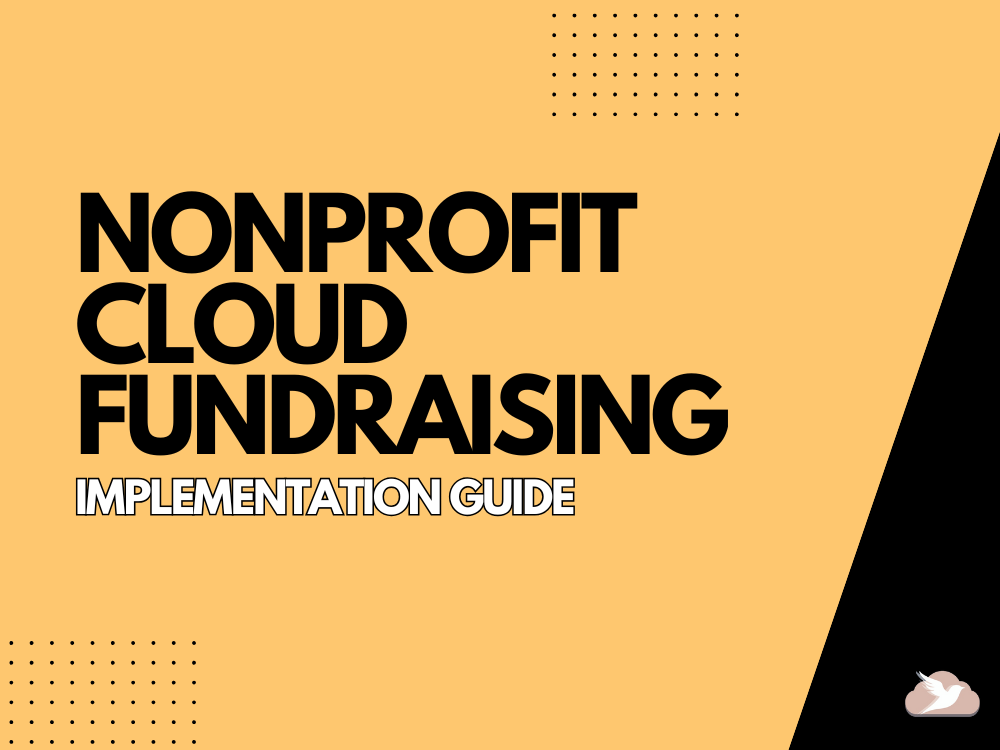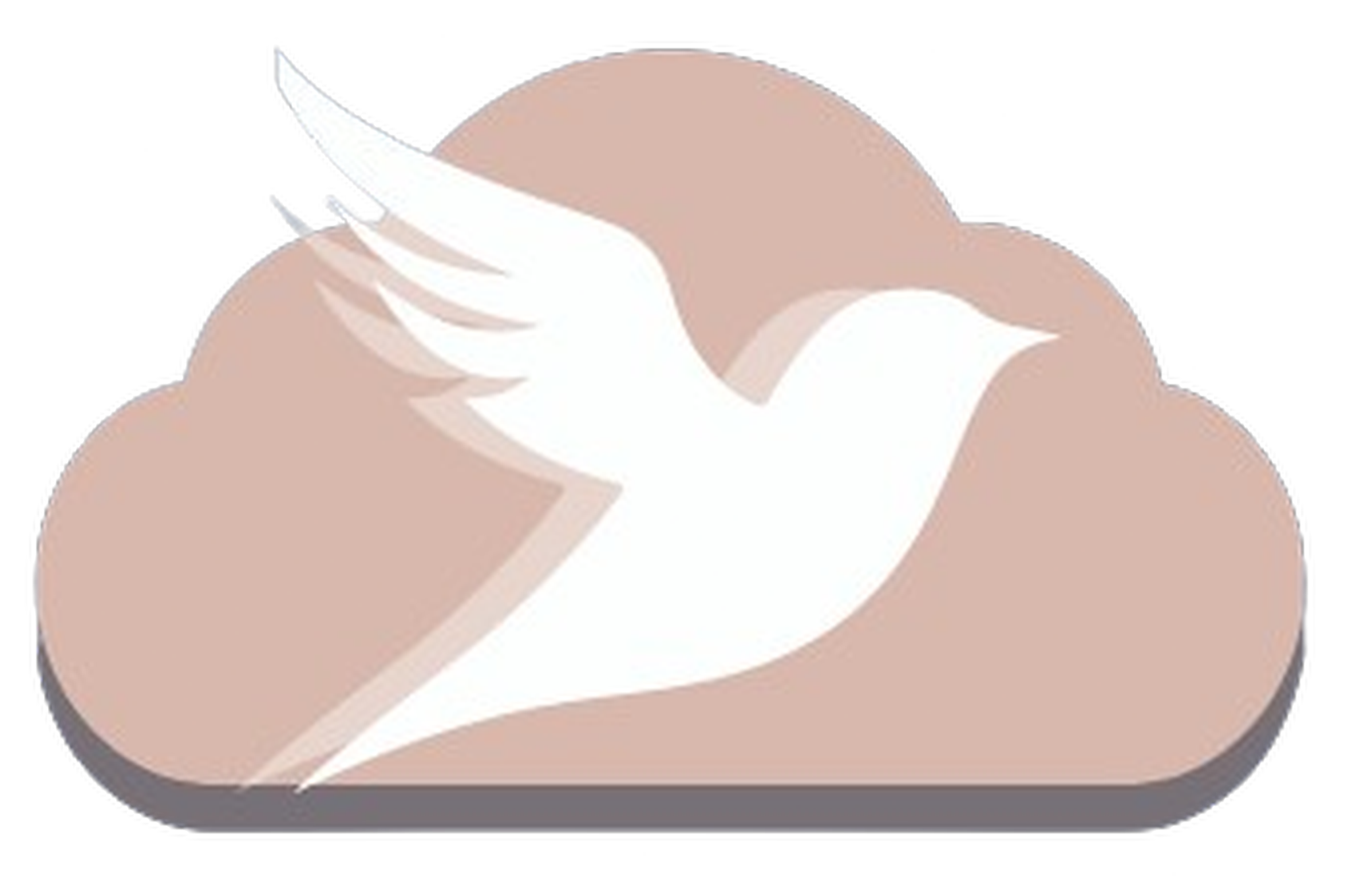Nonprofit Cloud Fundraising Implementation
The only guide you need to get started with Salesforce Nonprofit Cloud
Salesforce Nonprofit Cloud offers a powerful suite of tools to help nonprofits manage relationships, fundraising efforts, and operational tasks effectively. This guide walks you through the essential steps to get started, ensuring you can leverage Salesforce Nonprofit Cloud for your organization’s mission.
- Request 10 free Licenses and a provisioned Salesforce Nonprofit Cloud org
- Basic Setup
- Nonprofit Cloud Applications
- Constituents and Relationships
- Events and Milestones
- Interactions
- Fundraising Efforts
- Fundraising Campaigns
- Fundraising Objects
- Data Processing Engine
- Onboard Users
- Chatter
- Reports and Dashboards
- Homepage
- Sharing and Visibility
- Customization and Personalization
I will be skipping through some typical Salesforce Admin steps in the written guide, but they are covered in the video guide in addition to the detailed Salesforce documentation.
Guide on YouTube
This guide is available in Video format on my YouTube Channel as well.

Guide in Writing
1. Request 10 Free Licenses and a Provisioned Salesforce Nonprofit Cloud Org
(For a detailed guide on how to apply for the 10 free licenses, check this article)
Salesforce provides 10 free licenses to eligible nonprofits through its Power of Us program.
- How to Apply: Visit the Salesforce Power of Us portal, submit your application, and provide proof of your nonprofit status.
- Benefits: Gain access to Salesforce’s robust Nonprofit Cloud, tailored specifically for nonprofit needs.
- Provisioning: Once approved, Salesforce will provision your Nonprofit Cloud org with tools for donor management, fundraising, and more.
- Support Connect with us or with a Salesforce Account Executive to help you with the process
2. Basic Setup
To get started with Salesforce Nonprofit Cloud, follow these essential steps for a smooth initial configuration:
1. Enable Person Accounts
Person Accounts are crucial for managing individual donors and constituents effectively. This feature combines the capabilities of accounts and contacts, allowing you to track individual records without needing a separate account record.
How To
Setup > Person Accounts > Enable
2. Set Up Group Membership
Group membership is vital for organizing households, committees, or other collaborative groups. This setup ensures you can associate multiple individuals with a group, making it easier to track interactions and contributions at a group level.
How To
Setup > Group Membership Settings > Enable
3. Assign Permission Set Group
Permission sets simplify user access by bundling permissions into reusable groups. Assigning the appropriate Permission Set Group ensures that your team members have the necessary access to Nonprofit Cloud features without over-permissioning.
How To
Setup > Permission Set Groups > All Permission Set Groups List View > Select Fundraising_Admin or Fundraising_User > Manage Assignments > Add Assignments > Select User/s > Assign > Done
4. Set Up Data Pipelines
Data pipelines are used for automating the flow of data between systems and processes. Setting up these pipelines ensures seamless data integration and synchronization, especially when dealing with large volumes of donor and fundraising data.
How To
Setup > Getting Started (Under Data Pipeline) > Enable
5. Set Up Interaction Summaries
Interaction summaries allow you to capture and organize key details from interactions with donors, constituents, or partners. This feature helps in maintaining a clear record of engagements, fostering better relationships and communication.
How To
Setup > Interaction Summary Settings (Under Program and Case Management) > Enable
6. Turn On Fundraising
Enable fundraising features to access tools like Donation Management, Gift Entry, and Recurring Donations. This step is essential for tracking contributions and managing your fundraising campaigns effectively.
How To
Setup > Fundraising Settings > Turn On
By following these steps, you’ll have a solid foundation for leveraging the full potential of Salesforce Nonprofit Cloud. If you need further assistance, explore Salesforce documentation or consult with us.
Some additional basic configurations
- Organization Settings: Update your nonprofit’s company information and fiscal year settings.
- User Profiles: Create user profiles with appropriate permissions based on roles within your organization, try to use Permission Sets instead of profiles.
3. Nonprofit Cloud Applications
Understand the key applications included in the Nonprofit Cloud.
| App | Use | Audience |
|---|---|---|
| Philanthropy & Partnerships | Tools and information to cultivate and solicit large gifts | Fundraisers and grant writers |
| Fundraising Operations | Essential tasks of fundraising | Gift processors |
| Donor Engagement | Track and manage mass-market fundraising efforts | Fundraisers and campaign managers |
| Fundraising Strategy | High-level understanding of your fundraising data and your activities | Executives and fundraising managers |
| Your Account | Purchase Licenses and Products | Executives / Owners |
4. Constituents and Relationships
Centralize data about your supporters to build stronger relationships.
- Account Account Relationship: Used to create a relationship between two organizations.
- Contact Contact Relationship: Used to create a relationship between two individuals.
- Account Contact Relationship: Used to create a relationship between an individual and an organization.
5. Events and Milestones
Plan, track, and execute key events and organizational milestones. Use Events to capture and visualize the key events and milestones in a stakeholders life, such as getting married and changing jobs. Use the details to inform fundraising, care plans, and other services.
Examples of Milestones for Businesses:
- Grant Awarded
- New Executive Member
- PEAK Member
- TAG Member
- Co-funder
- Charity Check
Examples of Milestones for Individuals:
- Baby
- Retirement
- Job
- Graduation
- Award
How To
From Setup, in the Quick Find box, enter Life, and then select Life Events. Follow the guided setup to configure Life Events.
6. Interactions
Log and track every interaction with your constituents.
- Activity Management: Record calls, emails, and meetings.
- Engagement Tracking: Use tasks and reminders to follow up with donors or volunteers.
- Timeline View: Visualize interactions over time for better insights.
- Attendance Log who attended this meeting or interaction
- Interaction Summary Keep note of what was discussed, objectives and outcomes.
7. Fundraising Campaigns and Efforts
Organize and streamline your nonprofit’s fundraising activities.
- Campaigns: Launch fundraising campaigns and log donations that came in as a result of that campaign to measure impact. Examples are Annual Giving Campaign, Peer-to-Peer Fundraising, and Giving Tuesday.
- Outreach Source Code: Get even more granular and specify a fundraising effort as part of a campaign such as Email, Text, In-Person Events and log donations towards this effort.
You get to know which of the campaigns you launched had the most success, and you get to know which of the efforts of each campaign helped generate most donations, pretty neat.
8. Fundraising Objects
Leverage standard objects to manage your fundraising efforts. The three main objects you would use to log donations are as follows:
- Opportunities: Represents a Major Gift Opportunity, not the gift itself, but rather the opportunity to make the major gift happen and the stages such as Prospecting, Qualification, Nurturing etc... .
- Gift Commitment: Represents the configuration for the recurring gift, not the gift itself. Example: John will make a donataion once every month.
- Gift Transaction: This is the actual donation now, once an opportunity is closed and the donor makes the major gift, it is created as a Gift Transaction, also, whenever a gift received on scheduled date from the gift commitment, it is created as a Gift Transaction.
To make it short:
- Use Opportunities for Major Gifts.
- Use Gift Commitments for Pledges.
- Use Gift Transactions for One-Time Gifts.
9. Data Processing Engine
The most important piece here is an object called "Donor Gift Summary"
Donor Gift Summary will show you all types of giving information about a constituent such as:
- Average Gift Amount
- Best Gift Year
- Current Year Gift Count
- Days Since Last Gift
- First Gift Amount
- Total Gifts Amount
- Gift Count
You can schedule a job to trigger Data Processing Engine to run to calculate that information nightly.
10. Onboard Users
At this point, you should have a Minimum Viable Product, get your team familiar with Salesforce and its capabilities and invite them to start using the system.
- Training Resources: Use Trailhead modules designed for nonprofits.
- User Adoption: Encourage adoption by demonstrating value in everyday tasks.
11. Chatter
Enable team collaboration within Salesforce.
- Internal Communication: Share updates and collaborate on records.
- File Sharing: Upload and share files within Chatter.
- Groups: Create groups for teams or specific projects.
Salesforce also integrates with Slack to streamline communication and collaboration where your team is.
12. Reports and Dashboards
Turn data into actionable insights. Isn't this the most important thing?
- Custom Reports: Build reports tailored to your organization’s needs.
- Fundraising Metrics: Monitor donation trends and campaign performance.
- Fundraising Dashboards: Create charts to give you a high level overview of your fundraising efforts and results.
13. Homepage
Customize your Salesforce homepage to highlight key information. I typically customize homepage last, towards the end of the project, we know what we need to see first once we log in.
- Custom Components: Add widgets to display recent donations or key metrics.
- Personalized Views: Tailor homepages for different roles, such as fundraising or program management.
- Dashboard: See progress towards goals.
14. Sharing and Visibility
Control access to data within your organization. Careful, if you are new to Salesforce, you may give more access than users need to in good faith, this poses a security risk.
- Org-Wide Defaults: Set baseline access levels for different objects.
- Sharing Rules: Define rules to share records based on criteria.
- Role Hierarchies: Ensure data visibility aligns with organizational structure.
- Object and Field Level Security: Ensure users have access to the objects and fields they need to only.
15. Customization and Personalization
Tailor Salesforce to fit your nonprofit’s unique needs.
- Custom Objects and Fields: Create new objects and fields to capture specific data.
- Pages: Design pages that make data entry easier for users.
- Automation: Use Flows to automate repetitive tasks.
- Integrations: Explore Salesforce AppExchange for free and paid ads to extend Salesforce functionality and connect with third party systems like Mailchimp or Classy.
With these steps, you’re well on your way to maximizing the value of Salesforce Nonprofit Cloud for your organization. For in-depth tutorials and examples, check out my full course on YouTube.
Free Courses and Awesome Resources
- FREE Salesforce Nonprofit Cloud Fundraising Implementation Course: Watch on YouTube and start mastering Nonprofit Cloud solutions tailored for your organization.
- FREE Salesforce Flow Course: Start Learning Now to build powerful automations and improve your Salesforce skills.
- YouTube Channel: Subscribe to Swift Cloud Solutions for expert insights and tutorials on Salesforce Flows and Nonprofit Cloud strategies.
- Stay Updated: Join My Newsletter and never miss valuable tips and updates.
- Connect on LinkedIn: Follow Me for professional updates and Salesforce content.
- Need to speak with a Salesforce Consultant? Schedule a time with me here


